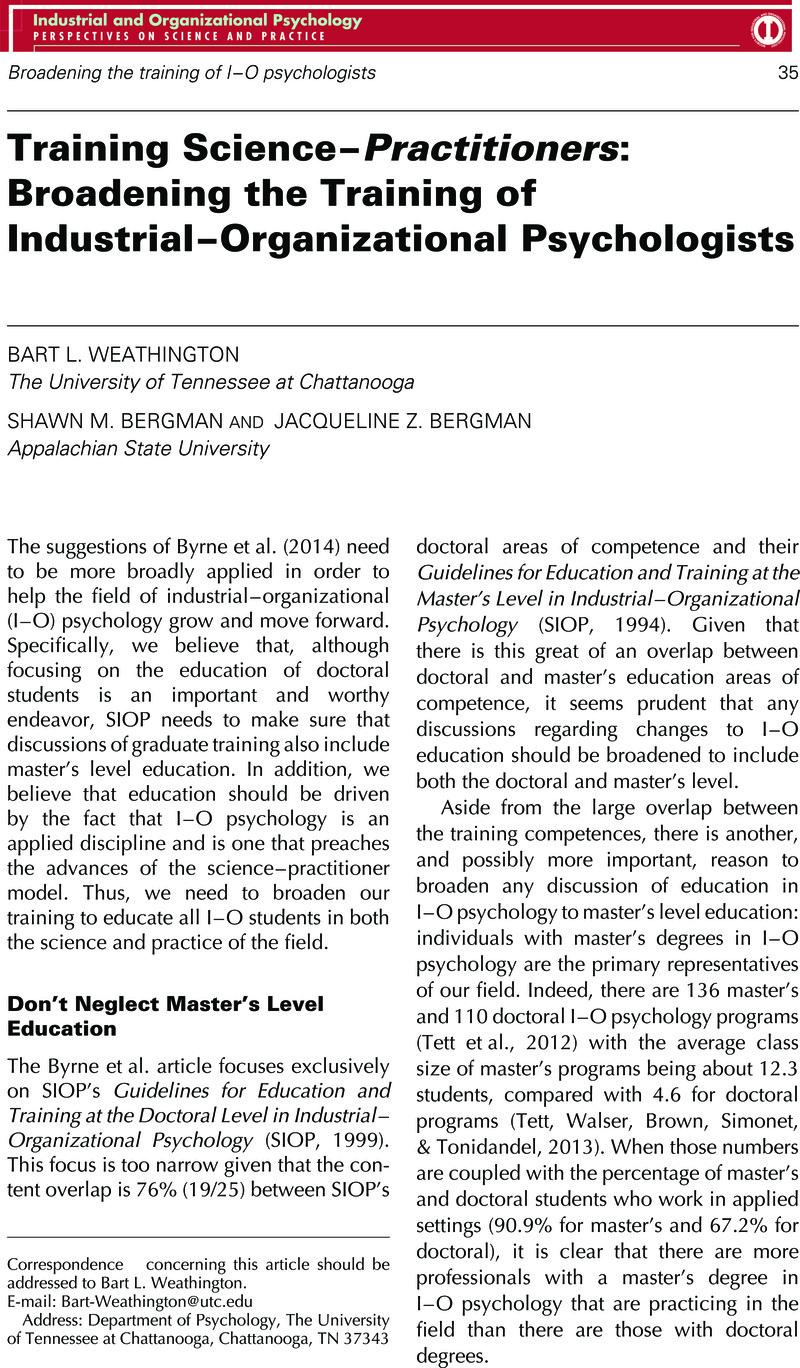Crossref Citations
This article has been cited by the following publications. This list is generated based on data provided by Crossref.
van Zyl, Llewellyn E.
and
Stander, Marius W.
2016.
Coaching Psychology: Meta-theoretical perspectives and applications in multicultural contexts.
p.
417.
Jorgensen, Lené Ilyna
van Zyl, Llewellyn E.
and
Stander, Marius W.
2016.
Coaching Psychology: Meta-theoretical perspectives and applications in multicultural contexts.
p.
357.
Kottke, Janet L.
Olson, Deborah A.
and
Shultz, Kenneth S.
2016.
Integrating Curricular and Co-Curricular Endeavors to Enhance Student Outcomes.
p.
15.
Aguinis, Herman
Ramani, Ravi S.
Campbell, P. Knight
Bernal-Turnes, Paloma
Drewry, Josiah M.
and
Edgerton, Brett T.
2017.
Most Frequently Cited Sources, Articles, and Authors in Industrial-Organizational Psychology Textbooks: Implications for the Science–Practice Divide, Scholarly Impact, and the Future of the Field.
Industrial and Organizational Psychology,
Vol. 10,
Issue. 4,
p.
507.
Jorgensen-Graupner, Lené I.
and
Van Zyl, Llewellyn Ellardus
2019.
Positive Psychological Intervention Design and Protocols for Multi-Cultural Contexts.
p.
381.
Zhou, Steven
and
Ahmad, Afra S.
2020.
Who’s your audience? Expanding I-O teaching to non-I-O students.
Industrial and Organizational Psychology,
Vol. 13,
Issue. 4,
p.
585.





